The Samsung Galaxy A7 (2016) was launched in India with the Galaxy A5 (2016). Both these models feature revamped design as compared to their predecessors. The Galaxy A7 (2016) is essentially a Galaxy A5 (2016), but, with 1 GB of extra RAM, a larger display and of course, larger battery. Does this make the Galaxy A7 a better performer than the Galaxy A5? We answer that question with this Samsung Galaxy A7 (2016) review.
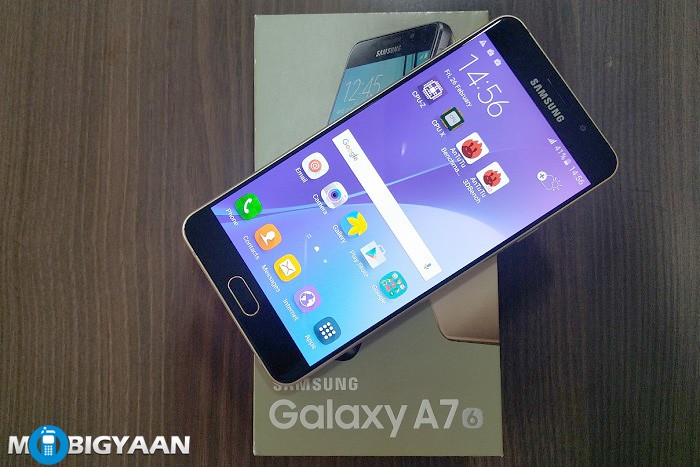
In box contents
Let’s take a quick look at the box contents before we walk you through this Samsung Galaxy A7 (2016) review.
- Samsung Galaxy A7 (2016)
- Fast Charger
- USB Cable
- SIM Tray Ejector
- Earphones
- Quick Start Guide
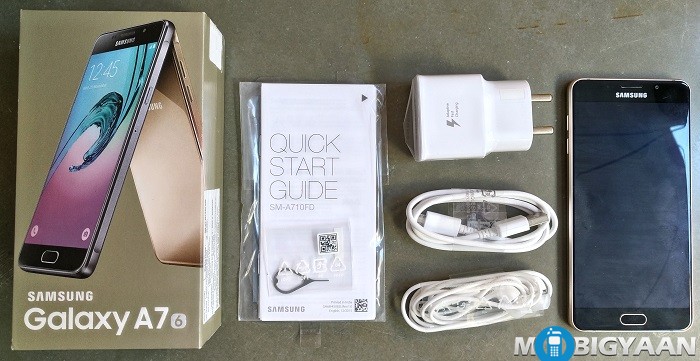
Samsung Galaxy A7 (2016) Specifications:
- CPU: 1.6 GHz Exynos 7580 octa-core processor
- RAM: 3 GB
- GPU: Mali-T720
- Operating System: Android 5.1.1 Lollipop
- Display: 5.5-inch Full-HD (1920 x 1080 pixels) Super AMOLED display
- Rear Camera: 13 MP auto-focus with LED flash and OIS
- Front Camera: 5 MP
- Internal Storage: 16 GB
- External Storage: Expandable up to 128 GB via microSD card
- Connectivity: 2G, 3G, 4G LTE, microUSB 2.0, GPS, NFC, Bluetooth 4.1, Wi-Fi 802.11 a/b/g/n
- SIM: Dual SIM (Nano + Nano)
- Other: Fingerprint Scanner
- Battery: 3300 mAh non-removable
- Colors: White, Black, Gold
- Weight: 169 grams
- Dimensions: 151.5 x 74.1 x 7.3 mm
Design
Talking about the design, the Galaxy A7 (2016) is very similar to the A5 (2016), except with a larger display. The front and back of the Galaxy A7 (2016) are covered with Gorilla Glass so that you don’t end up with scratches on this smooth surface. To top it up, Samsung has added a metal frame on the sides similar to the A5 (2016). The phone is pretty sleek and feels premium.
We have received the Gold colored variant of the Samsung Galaxy A7 (2016) for the review. Let’s take a detailed look at the design aspect of the Galaxy A7 (2016).
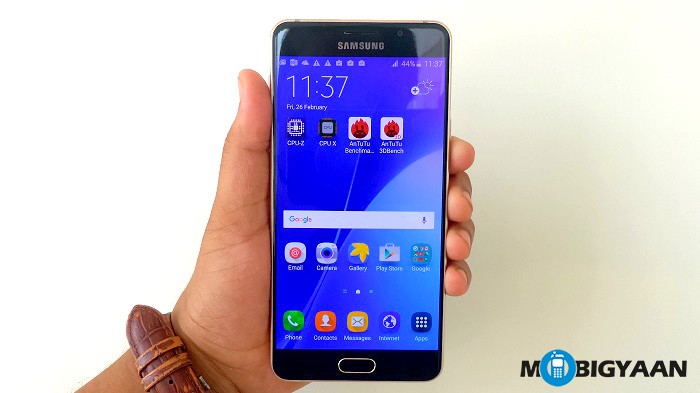
The Galaxy A7 (2016) boasts off a 5.5-inch Super AMOLED display with protection of Gorilla Glass. The front side of the phone also houses a 5 MP secondary camera which is accompanied by ambient and proximity sensor.
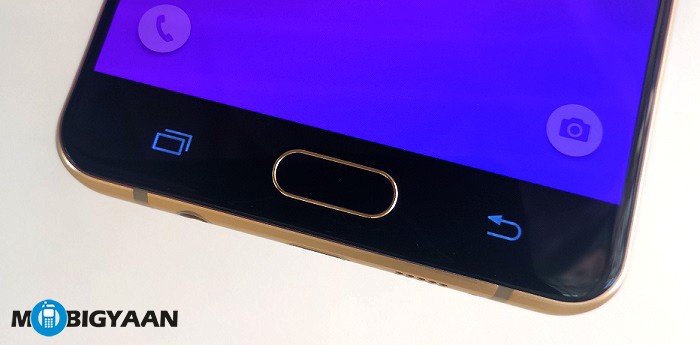
At the bottom of the screen is the Samsung’s good old home button which houses a Fingerprint Scanner as well. Thankfully, the capacitive navigation buttons are back-lit. We have seen many phones which don’t come with back-lit navigation buttons.
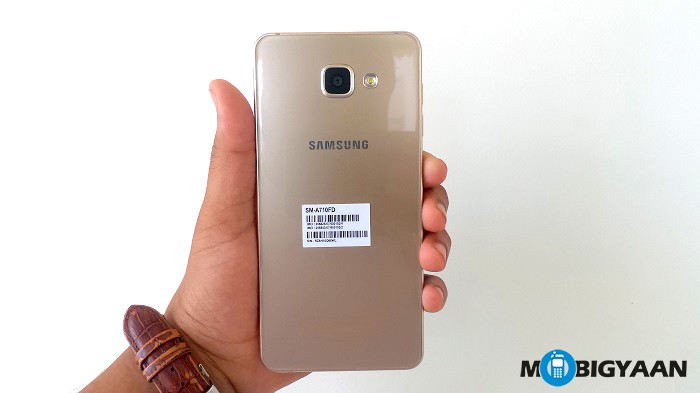
The rear view is similar to the Galaxy A5 (2016). You have the same 13 MP primary camera with LED flash. As said earlier, the back of this phone is also covered with Gorilla Glass which adds a layer of protection against scratches on the surface. There’s also a 3300 mAh non-removable battery which is bigger in contrast with A5 (2016)’s 2900 mAh battery. Well, bigger display certainly needs bigger battery as well.
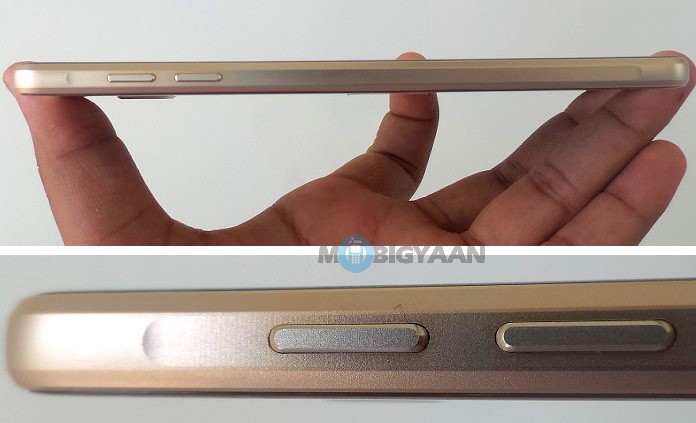
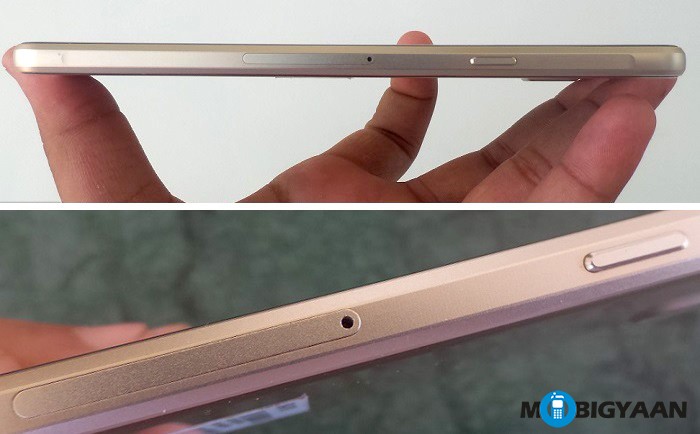
The left side of the A7 (2016) sports volume rocker whereas the power button is situated at the right side of the phone along with SIM card and microSD card slot. These buttons on both the sides provide a very tactile feedback and don’t feel cheap.
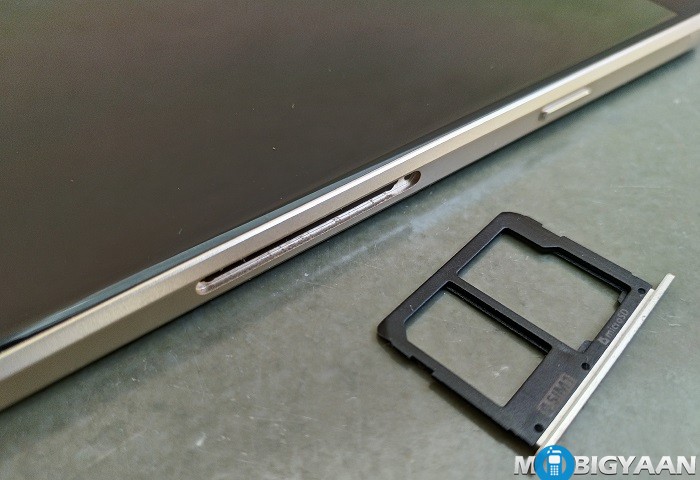
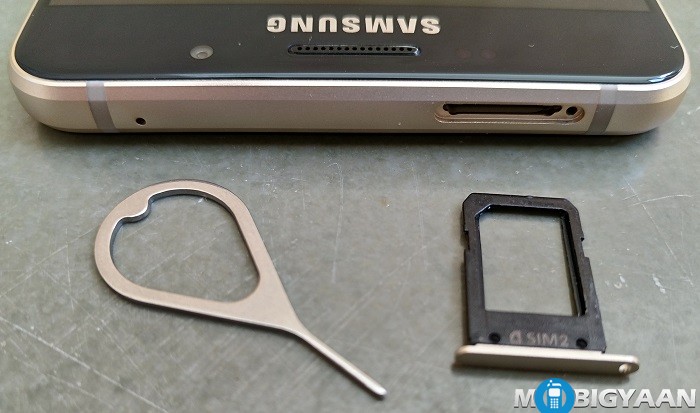
Similar to what we saw on the A5 (2016), the slot on the right side of the phone lets you insert a Nano SIM card along with microSD card. Whereas, the second SIM can be inserted in the slot provided at the top of the phone.
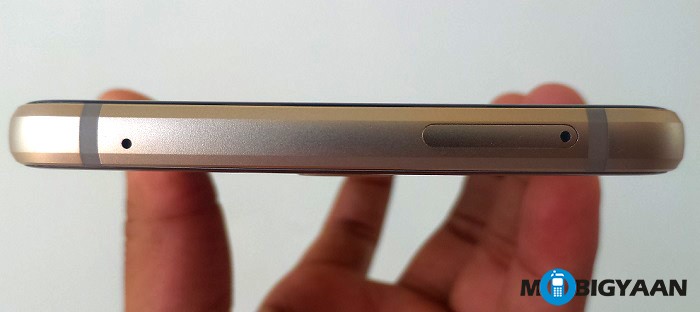
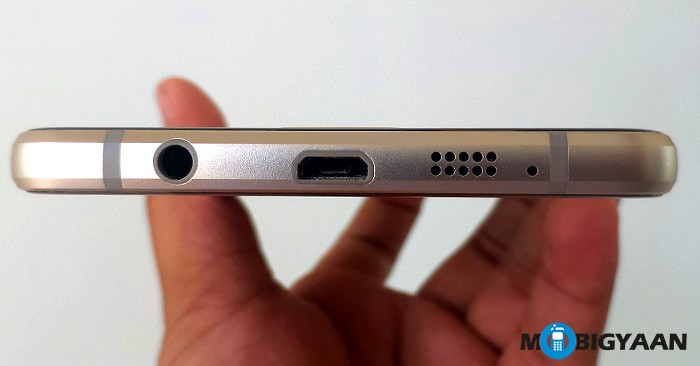
As we said earlier, the top of the phone consists of a secondary SIM card slot along with a mic. At the bottom is the 3.5 mm audio jack along with a mic, a micro USB port and a speaker.
Display
The Samsung Galaxy A7 (2016) boasts off a 5.5-inch Full-HD Super AMOLED screen having a resolution of 1920 x 1080 pixels and a pixel density of 403 ppi. Although the pixel density is less by 23 ppi as compared to the A5 (2016), it doesn’t make much difference.
 The performance of the display is similar to that of Galaxy A5’s. Both sport a Full-HD Super AMOLED display, except the A7 has a slightly larger display size than the A5. We are satisfied with the display. The screen has good sunlight visibility as well, just like the A5.
The performance of the display is similar to that of Galaxy A5’s. Both sport a Full-HD Super AMOLED display, except the A7 has a slightly larger display size than the A5. We are satisfied with the display. The screen has good sunlight visibility as well, just like the A5.
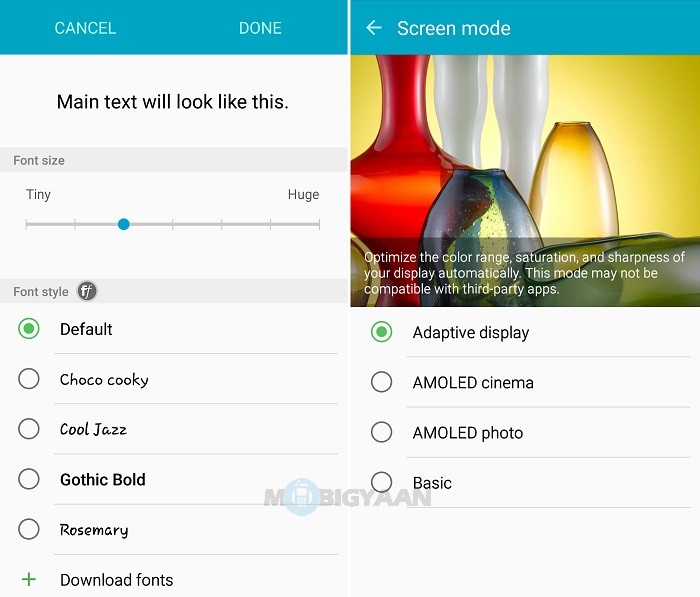
The screen mode and custom font that were found on the A5 are back with the A7. However, there’s one feature that made its way into the A7 but was absent on the A5. It’s the one-hand mode.
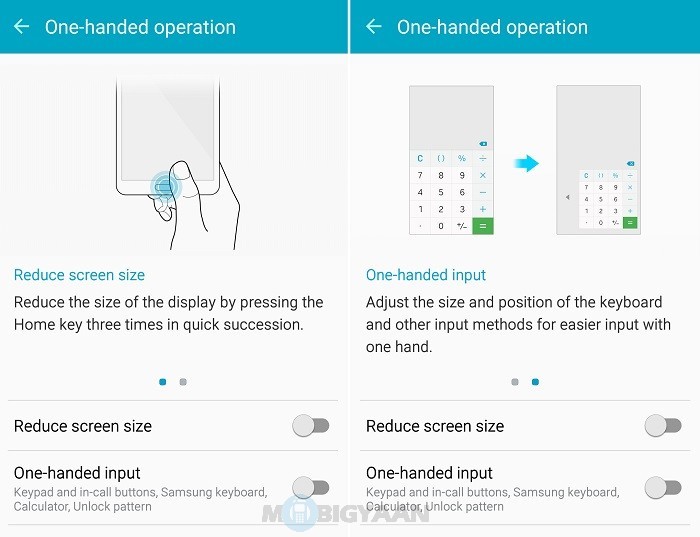
The one-hand mode lets you reduce the screen size as well as enable the one-handed input mode. This is useful for those with smaller hands. You can quickly reduce the screen size by successively pressing the home button three times. You can find this option under Settings > Display > One-handed operation.
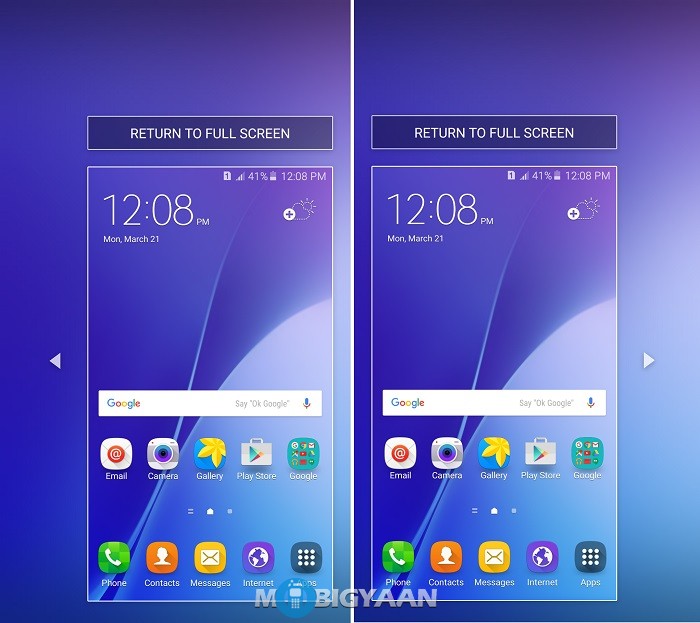
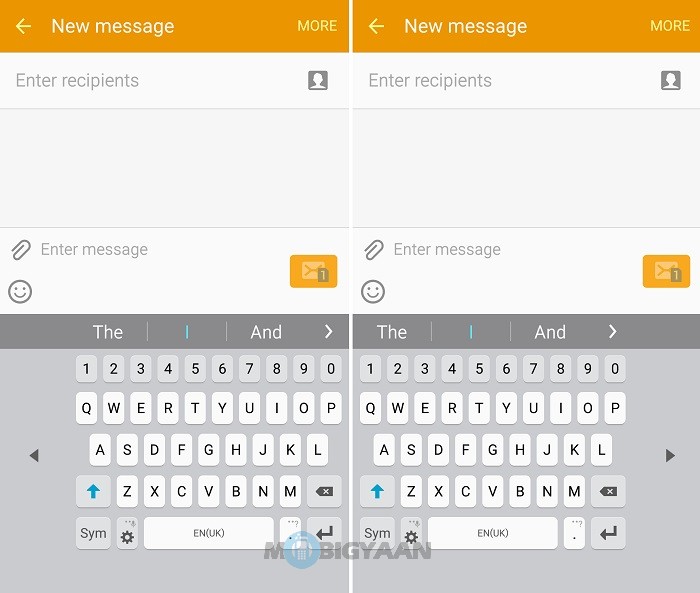
Fingerprint Scanner
The Galaxy A7 (2016), similar to the A5 (2016), also sports a Fingerprint Scanner on the home button.
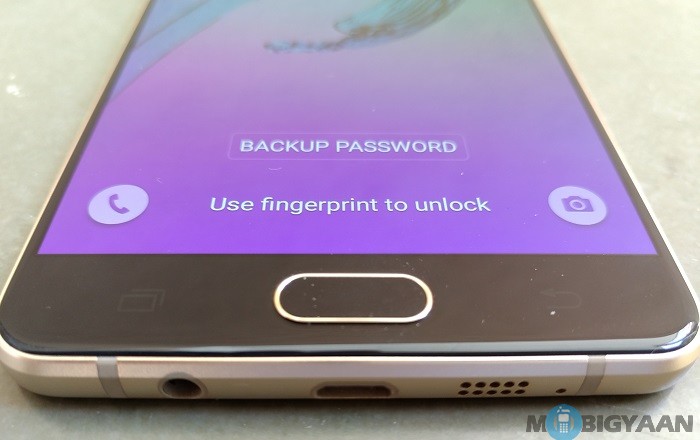
The fingerprint scanner on the Galaxy A7 performed better than the Galaxy A5. It’s accuracy percentage is more than that of the A5. The number of times we had to use the backup password to unlock the phone was also lower in contrast with the A5.
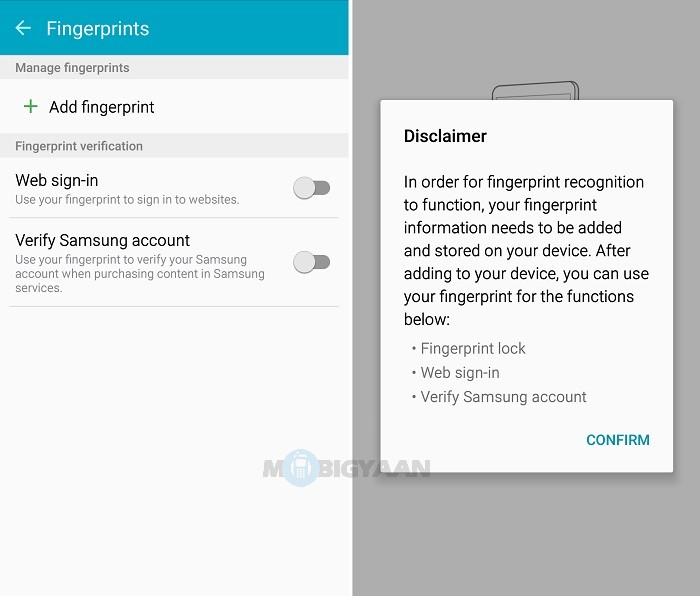
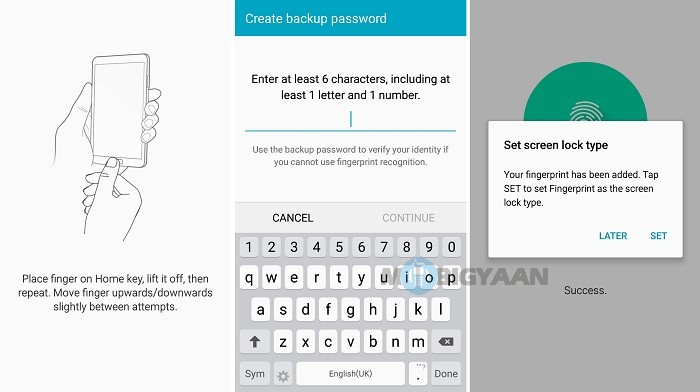
Go to Settings > Lock screen and security > Fingerprints to add your fingerprint. Also make sure you add a backup password as well so that you can unlock the device when the scanner doesn’t recognize your fingerprint.
Performance
The Samsung Galaxy A7 (2016) is powered by a 1.6 GHz Exynos 7580 octa-core processor coupled with 3 GB of RAM. The graphics department is handled by Mali-T720 GPU. The specs are similar to that of Galaxy A5’s, but, the A7 has 1 GB of extra RAM. Similar to the Galaxy A5, there’s another variant which is powered by Snapdragon 615 SoC along with Adreno 405 GPU. The one available in India is powered by Exynos though.
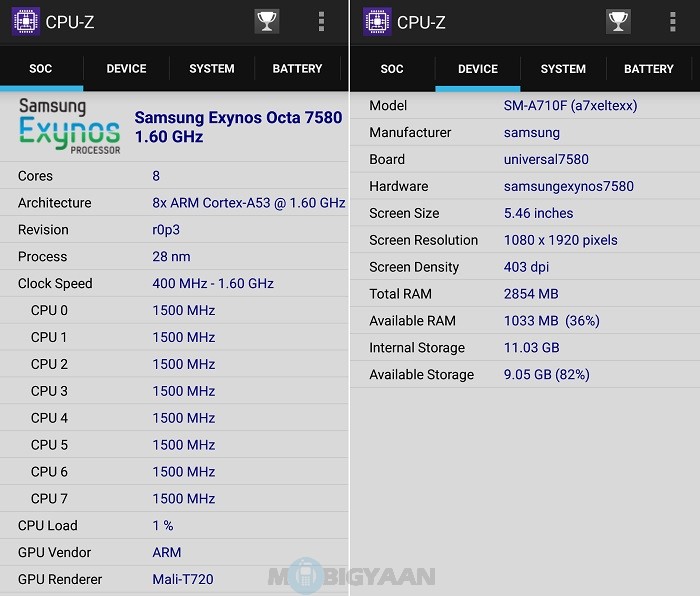
Multi-tasking on this phone was smoother than the Galaxy A5. We didn’t come across much issues while switching between different apps. However, just like the Galaxy A5, there were times when this phone stuttered and sometimes didn’t respond. It’s just the typical TouchWiz thing.
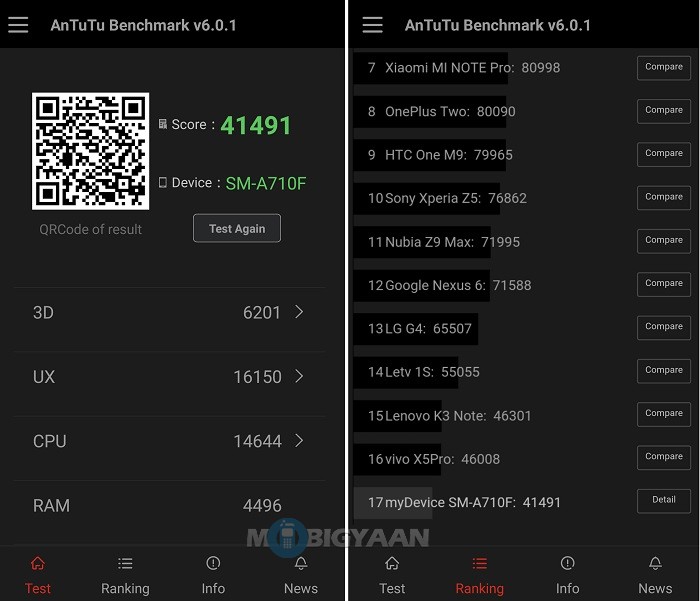
The Galaxy A7 scored 41,491 points in our AnTuTu benchmark test. These are surprisingly lower than that of the Galaxy A5 which scored 41,568 points. Not much of a difference between the points, though we expected the A7 to score little more. But, given the fact that both these phones feature the same chipset with a difference of 1 GB RAM, the A7 wouldn’t have scored more either.
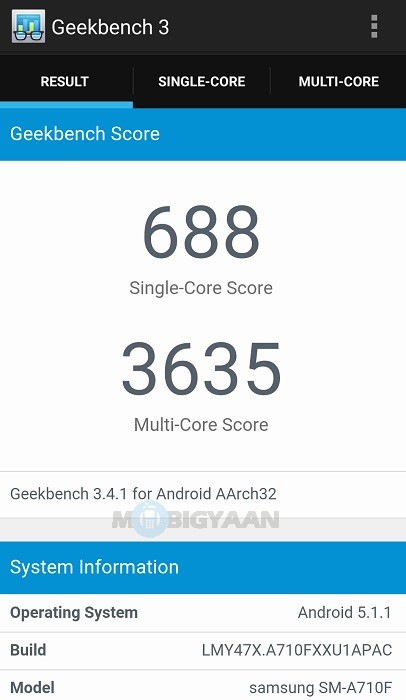
The story continues with the Geekbench 3 benchmark test as well. The Galaxy A5 scored 684 and 3618 in single and multi core test respectively. Whereas, the Galaxy A7 scored 688 and 3635 in single and multi core test of Geekbench 3 respectively.
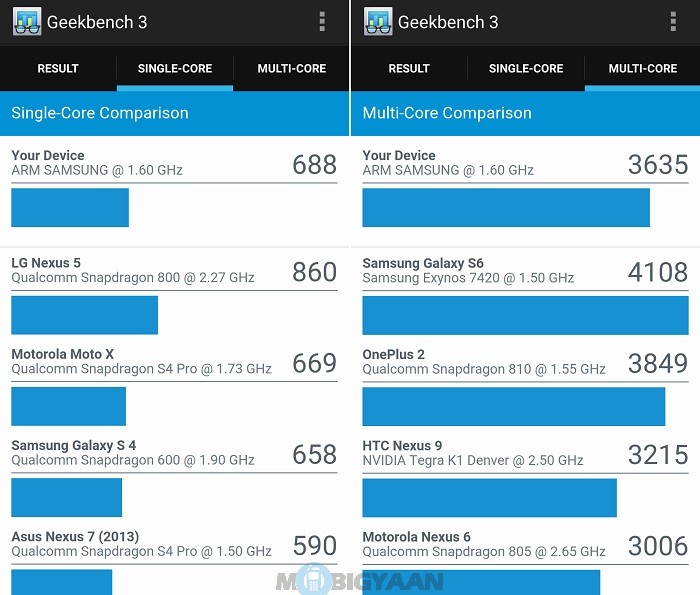
Here are the full stats of Geekbench 3 benchmark test of the Samsung Galaxy A7 (2016). All the apps that we tried out ran fine, but, as we said earlier, there were times when this phone stuttered and did not respond. We also tried games like N.O.V.A. 3: Freedom Edition, Traffic Rider and Asphalt 8. However, similar to the Galaxy A5, the Galaxy A7 too refused to run NFS No Limits.
Games we tested on the Samsung Galaxy A7 (2016)
- N.O.V.A. 3: Freedom Edition
- Traffic Rider
- Asphalt 8

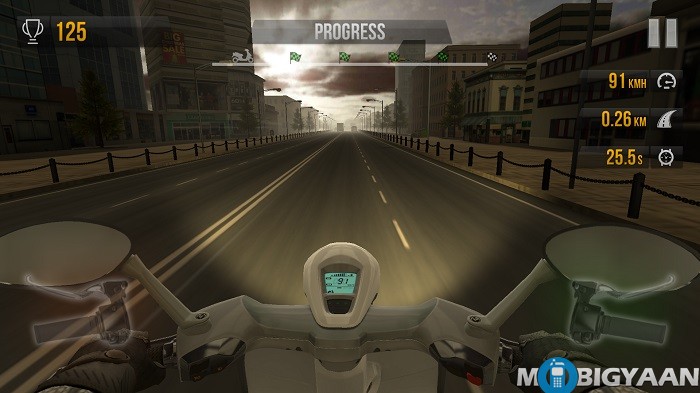
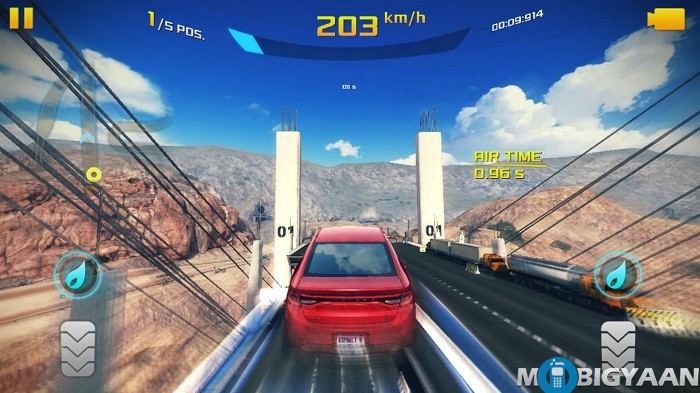
The graphics rendered were similar to the ones found on the Galaxy A5. This phone did not lag while playing games and did not exceed the 40 degree celsius mark when we played the above mentioned games back to back for more than an hour, which is good.
Software
The Samsung Galaxy A7 (2016) runs on Android 5.1.1 Lollipop out of the box and carries Android’s January security patch.
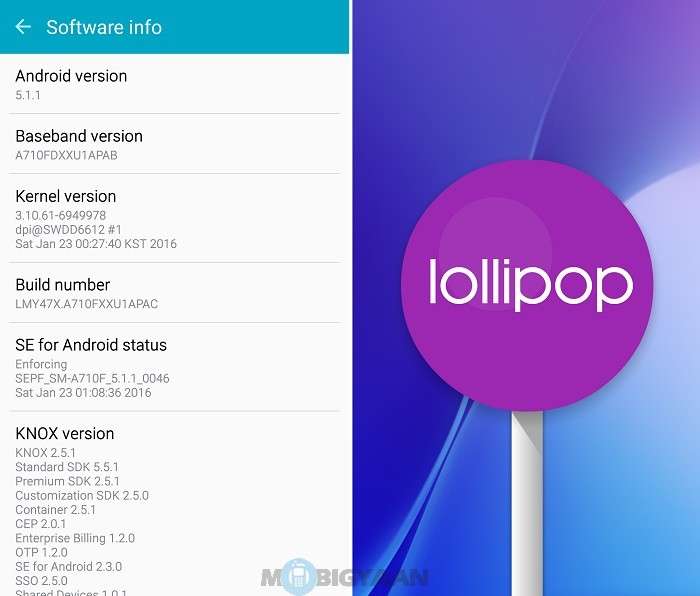
You will find this phone to be running on Samsung’s TouchWiz UI. We will say that Samsung should have launched this phone with Android 6.0 Marshmallow running out of the box. Even at the time of writing this, we haven’t heard anything from Samsung regarding Marshmallow update for the Galaxy A7 as well as the Galaxy A5.
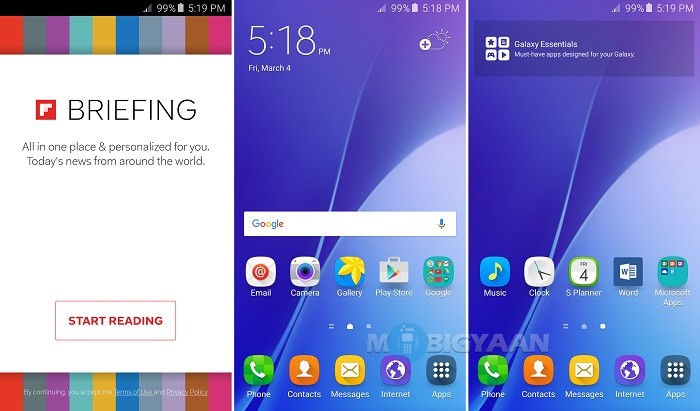
Pre-installed apps are similar to the ones found on the Galaxy A5. The list includes Flipboard, MS Word, MS Excel, MS Powerpoint, MS OneNote, MS OneDrive, Skype, Opera Max and Mix Radio. Did we mention that you also get 100 GB of OneDrive storage with this phone? Yes, you do get that much amount of cloud storage with this phone.
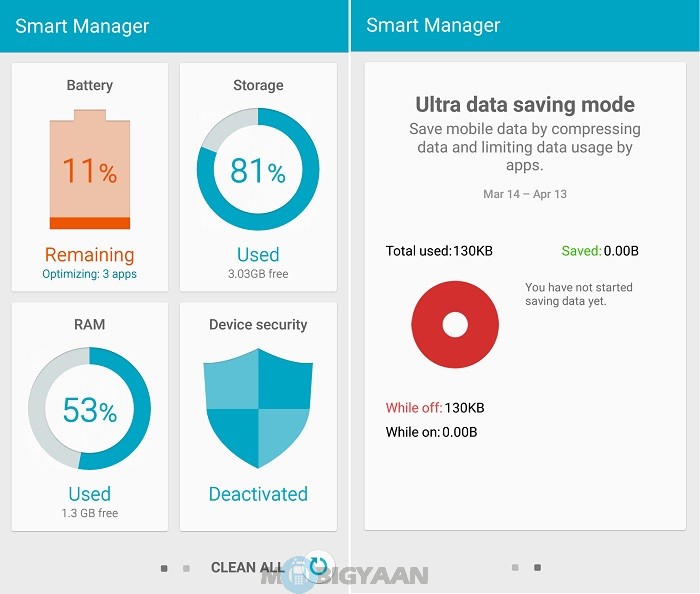
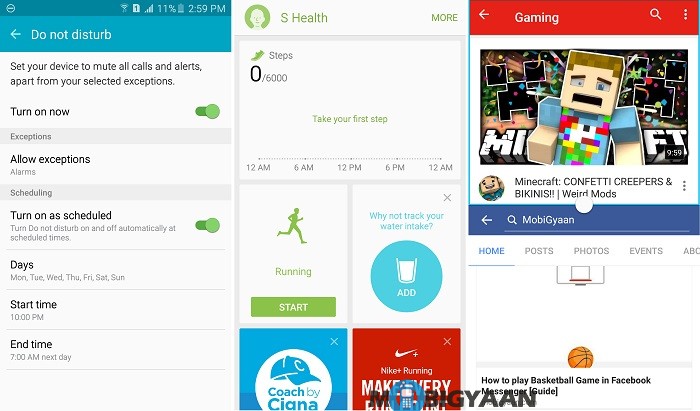
The software package also includes stuff like Smart Manager, Do Not Disturb, S Health, S Voice and Multi-Window feature. The Multi-Window (or split-screen, whatever you call it) does actually add an element of productivity. You can use two different apps at the same time. But, you cannot use all the apps in this mode unless the app developer supports it.
Camera
The Samsung Galaxy A7 (2016) comes with a 13 MP rear camera and a 5 MP front camera.
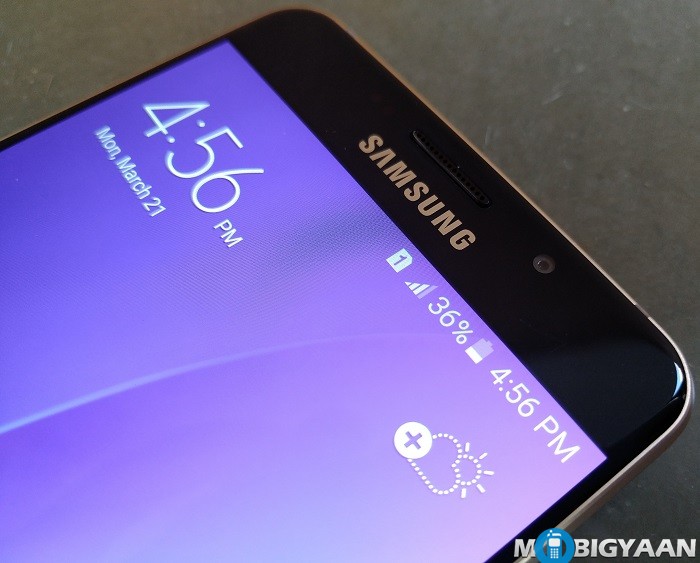
The 5 MP front camera is sufficient to take all the selfies you may want to. There’s a beauty option in this phone with which you can change the way you look by adjusting the slider. It can capture images at a resolution of 2576 x 1932 pixels and can record videos in a resolution of 1920 x 1080 pixels.
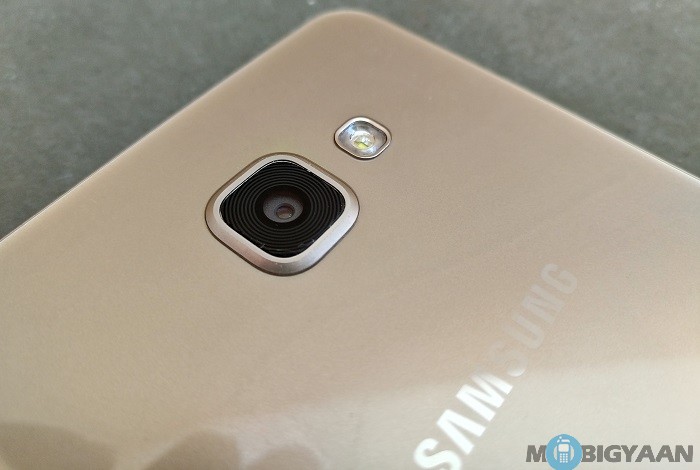
The 13 MP rear camera did take some good images, but that’s it, nothing fancy. It can capture images at a resolution of 4128 x 3096 pixels and can record videos in 1080p resolution.
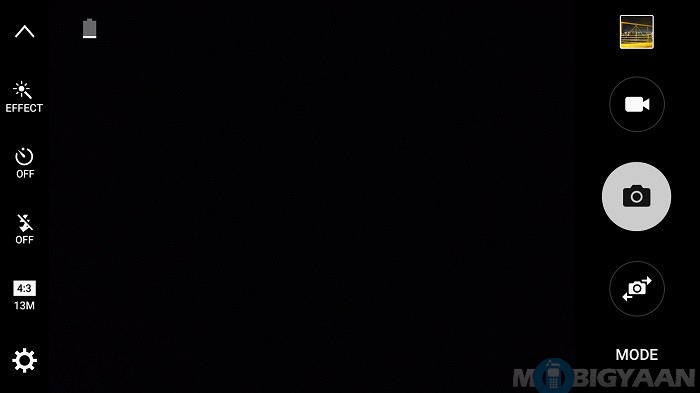
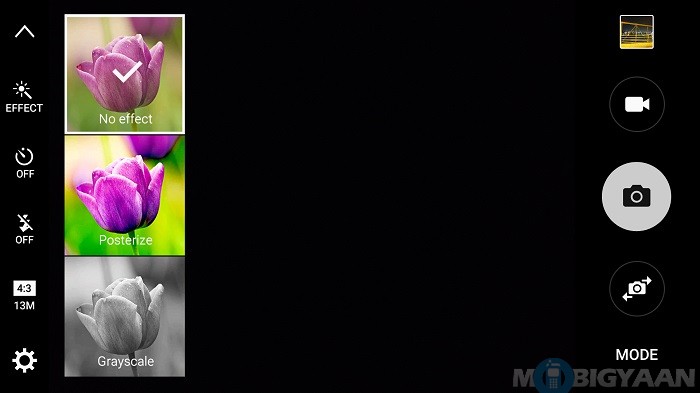
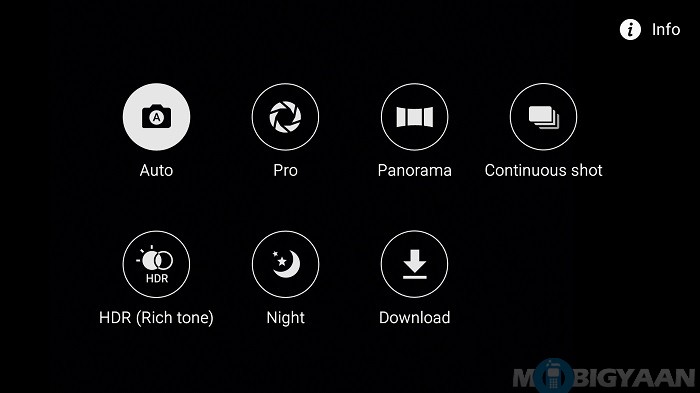
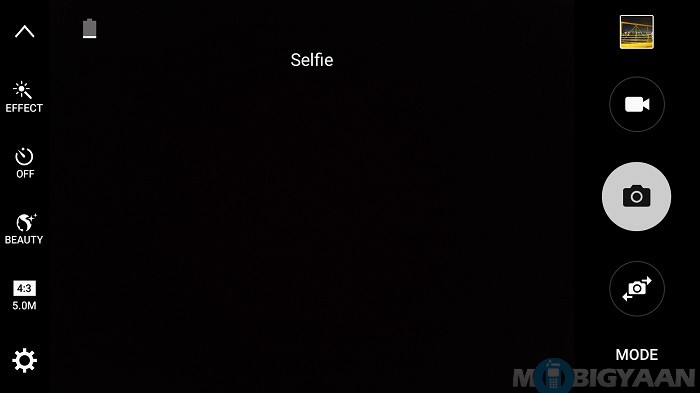
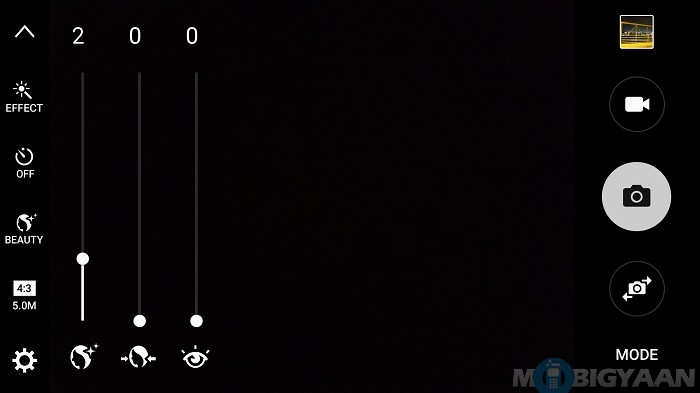
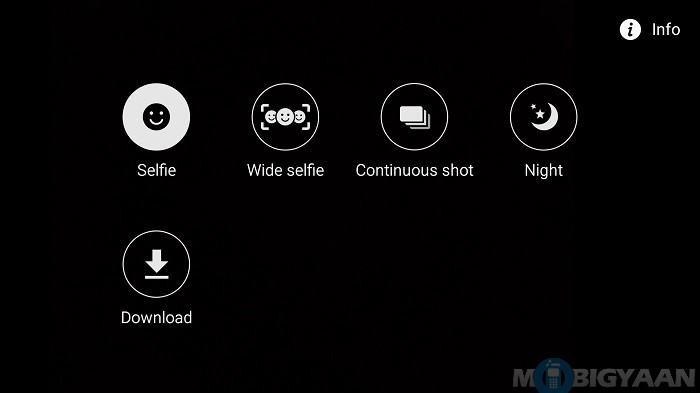
Now that you’ve seen how the UI of the camera app looks, let’s take a look the photos taken from the Samsung Galaxy A7 (2016).
Here are the daylight shots taken from the Galaxy A7 (2016).
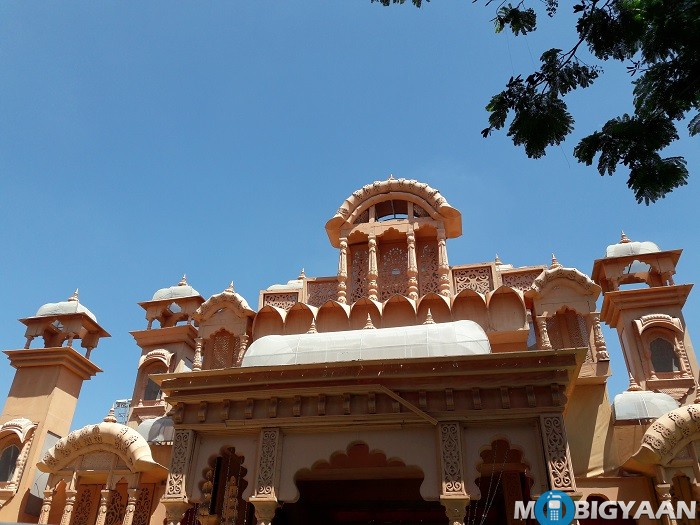
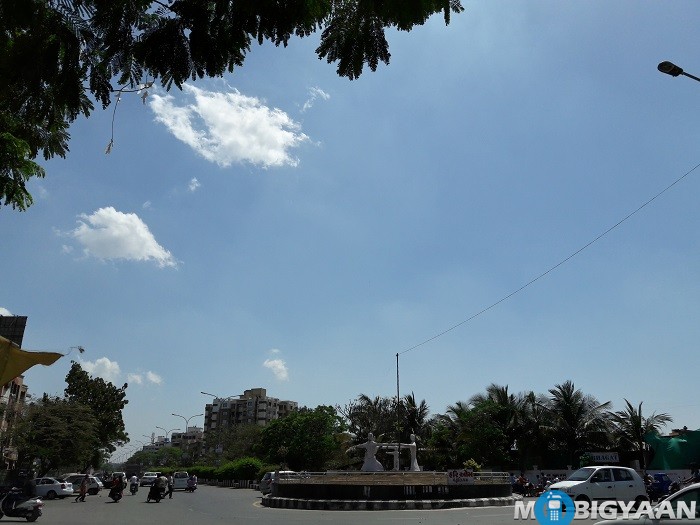
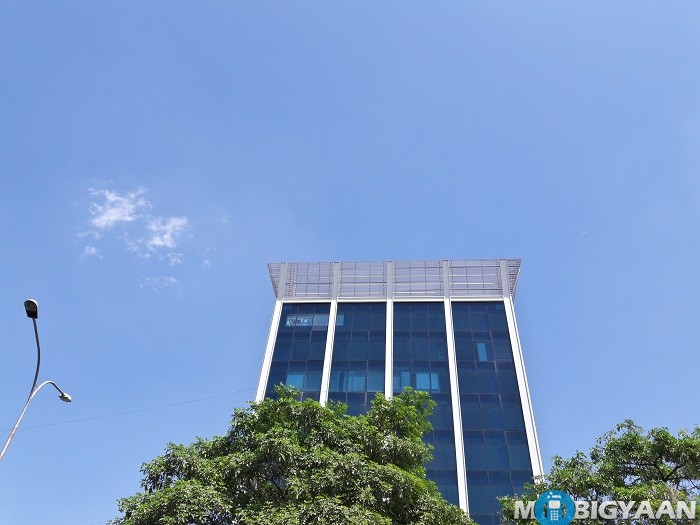
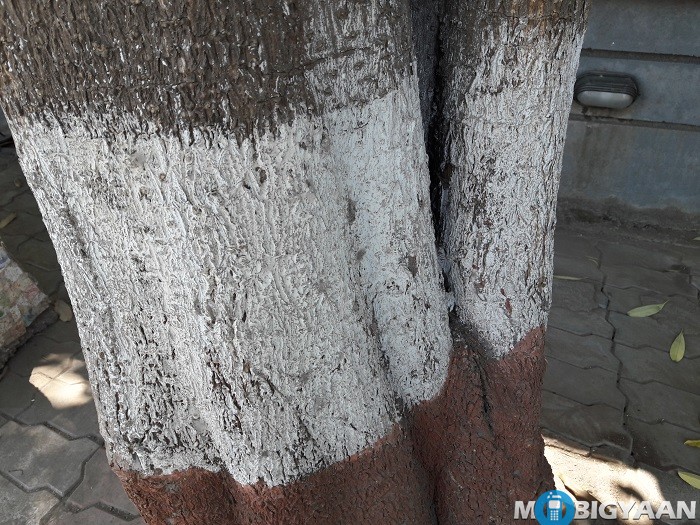
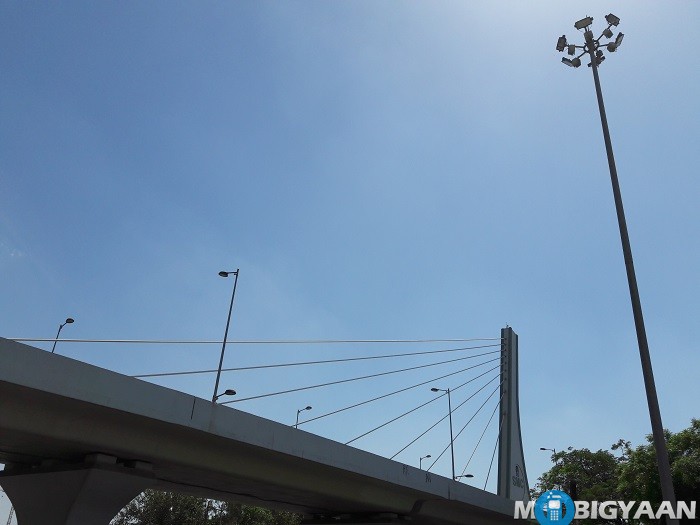
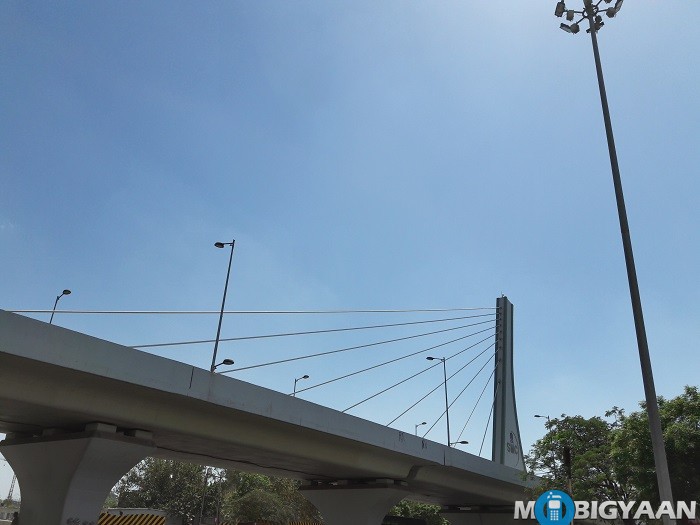

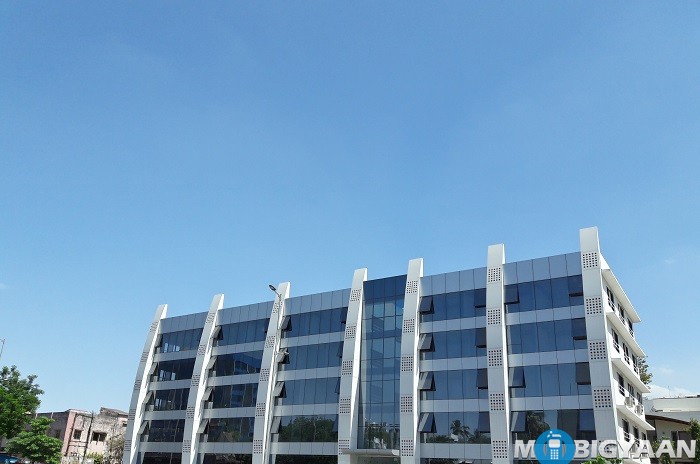
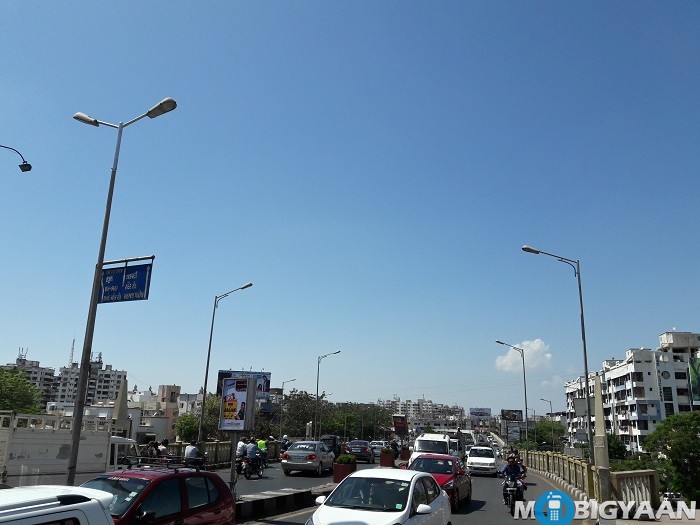
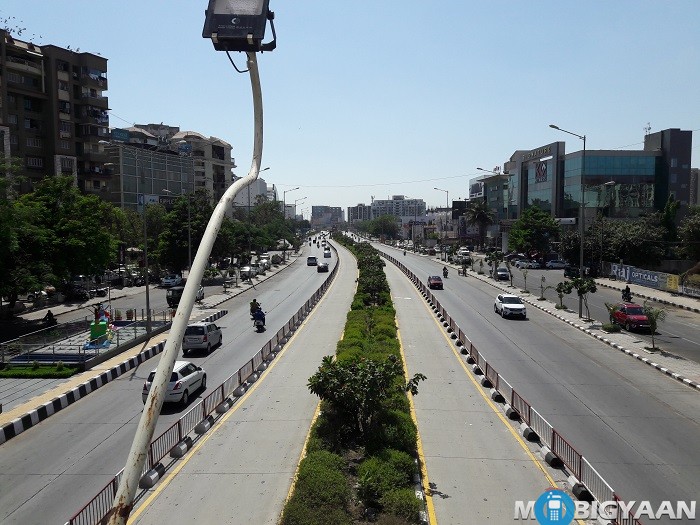
Now let’s take a look at some of the night shots taken from the Galaxy A7 (2016).
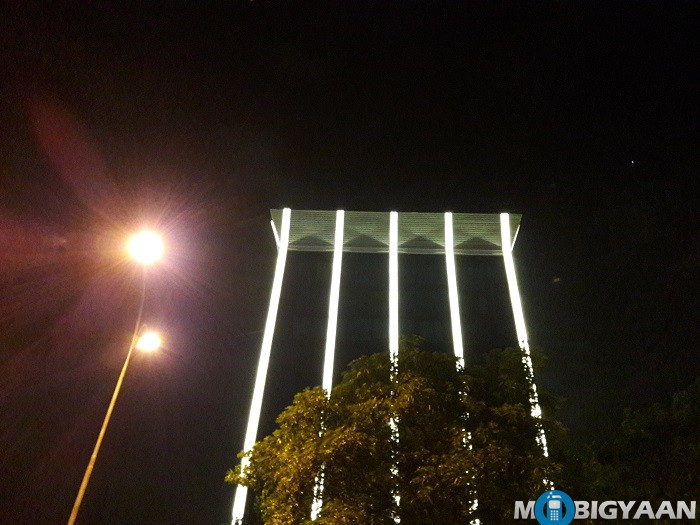
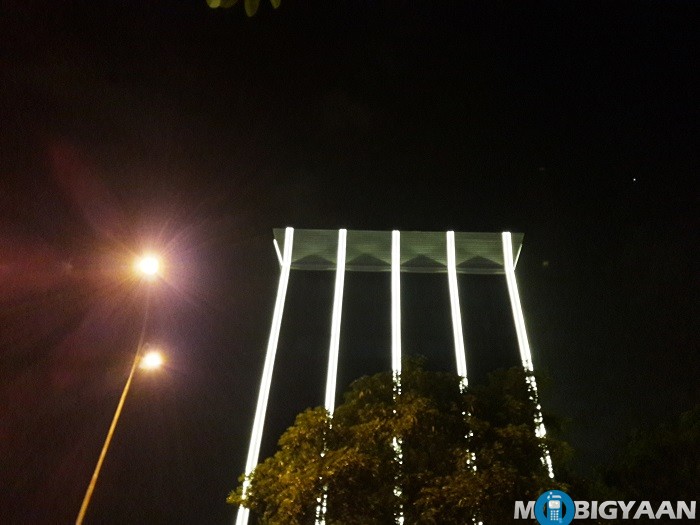
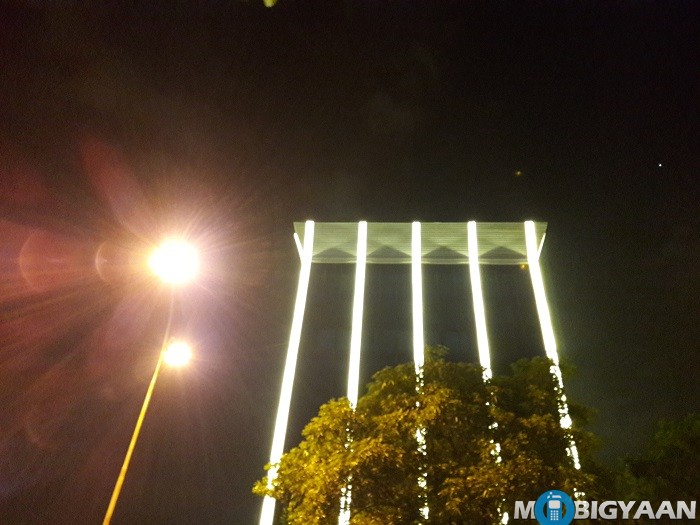
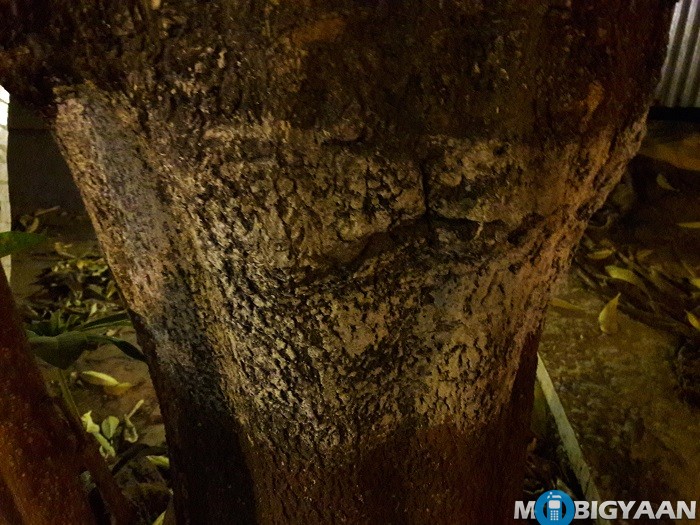


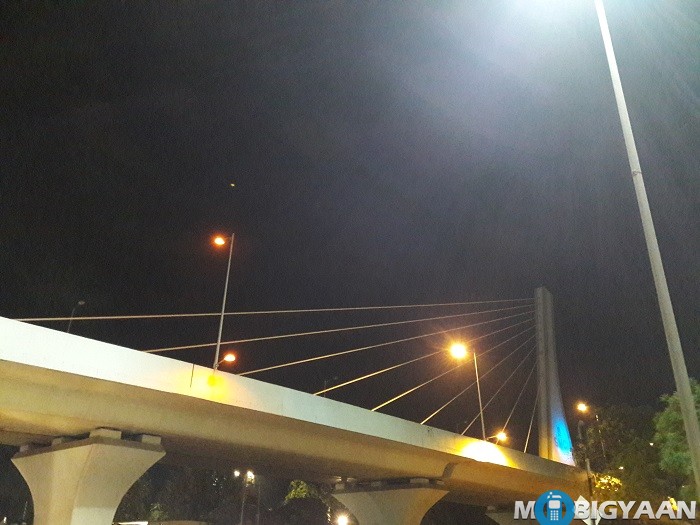
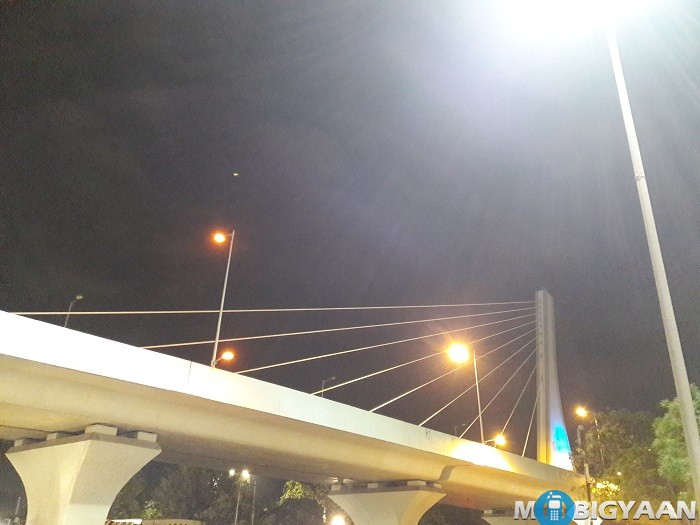
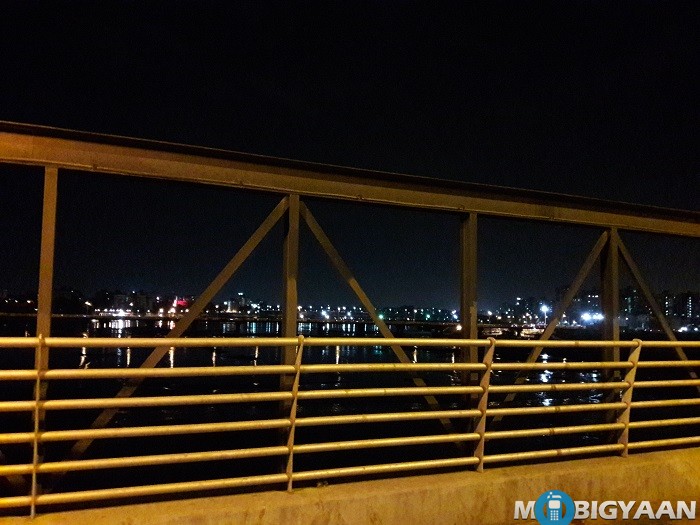
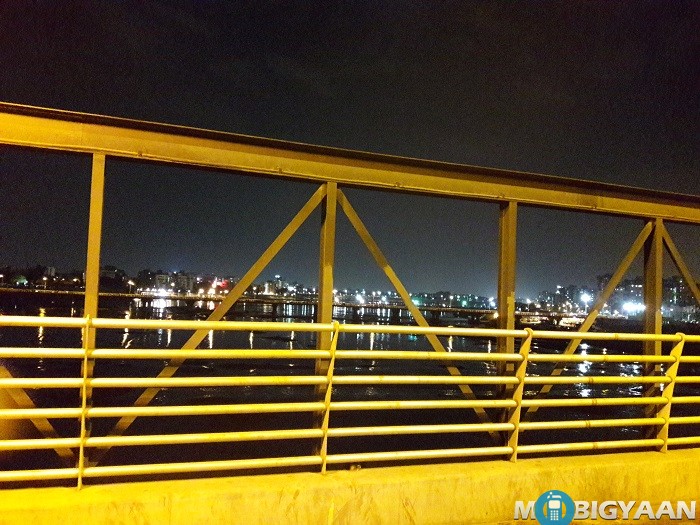
The camera of this phone is good, but not great. The images captured from the camera are of acceptable quality and there’s nothing more to add to it. The HDR mode also didn’t make much difference. The Night Mode did brighten the image though. The Galaxy A7 did a good job at stitching the Panorama image together. In short, the camera on the Galaxy A7 is similar to that on the Galaxy A5 and performed similarly if not better.
Call Quality and Audio
The call quality of the Galaxy A7 (2016) was good. We did not face any issues during our calls. Also, the person on the other end was able to hear us properly.
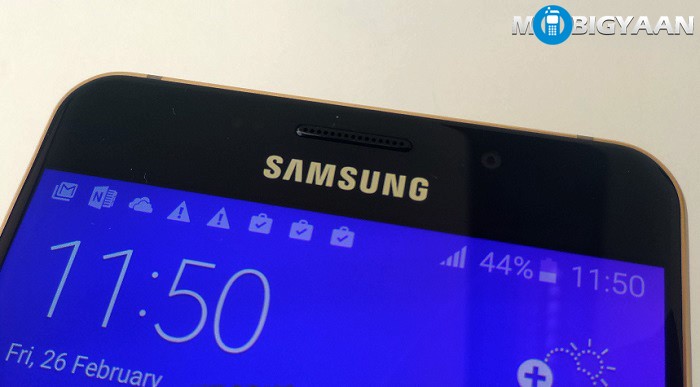
Talking about the speaker on this phone, it isn’t much loud. So, if you are planning to use this speaker for your small parties or hangouts, you are better off using a standalone speaker. The good thing about it is that even at 100 percent volume the audio didn’t feel distorted and felt clear as it would on a lower volume.
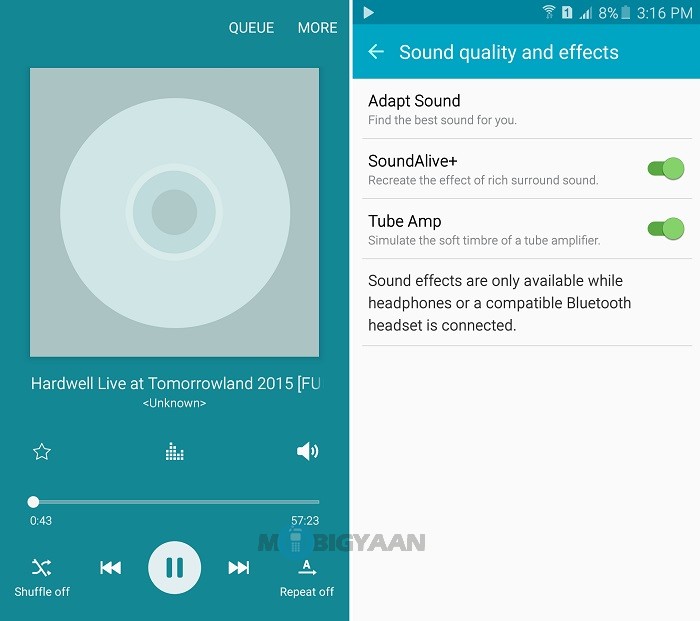
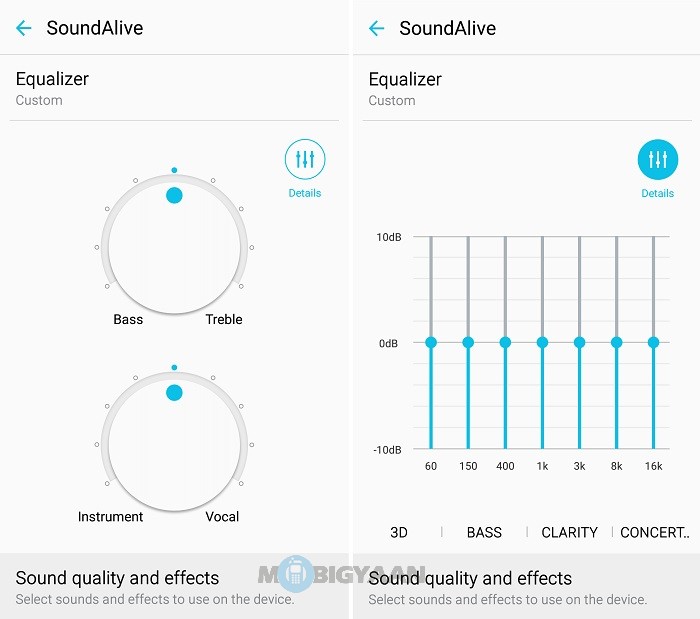
The Music app comes with some sound effect and equalizer settings to play with.
Storage
The Galaxy A7 (2016) comes with an internal storage of 16 GB with an option to expand the storage using a microSD card. You can expand the external storage up to 128 GB via microSD card.
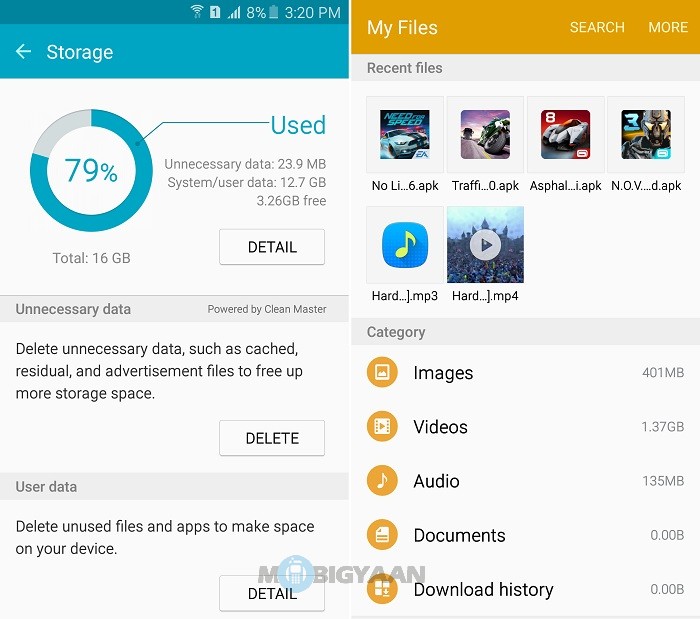
As stated earlier, you also get 100 GB of OneDrive storage with this phone.
Battery
The Samsung Galaxy A7 (2016) packs a 3300 mAh non-removable Li-Ion battery. The performance of this phone’s battery is very good.
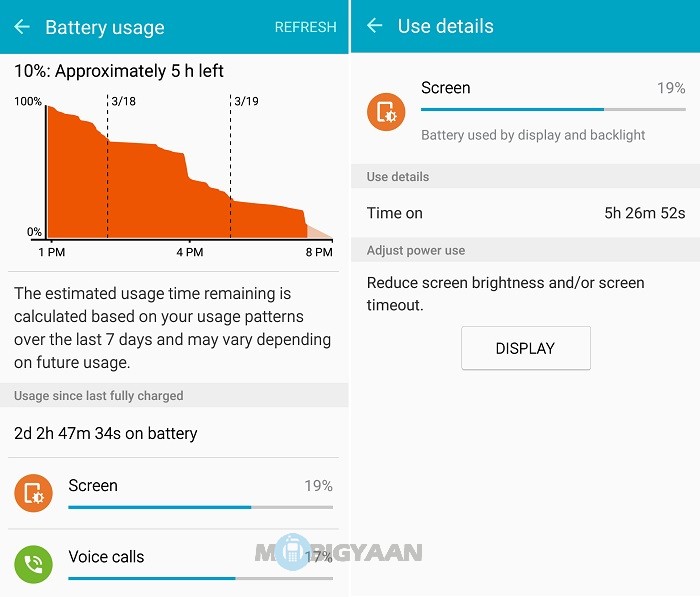
The Galaxy A7’s battery has really impressed us. We got a screen on time of more than 5 hours with still 10 percent of battery remaining. We played some high end games for an hour, made voice calls which resulted in a total time of 3 hours and used some social media apps like Facebook. Not to forget online video and music streaming.
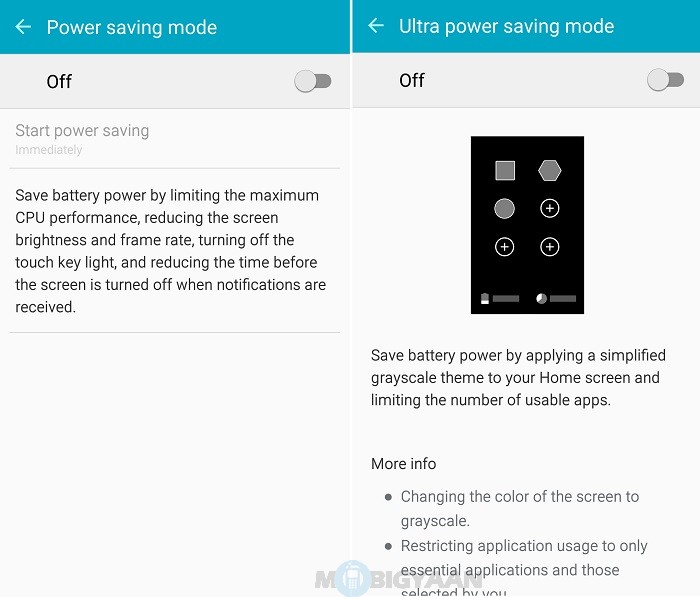
You can easily get more juice out of your battery by using the power saving modes available.
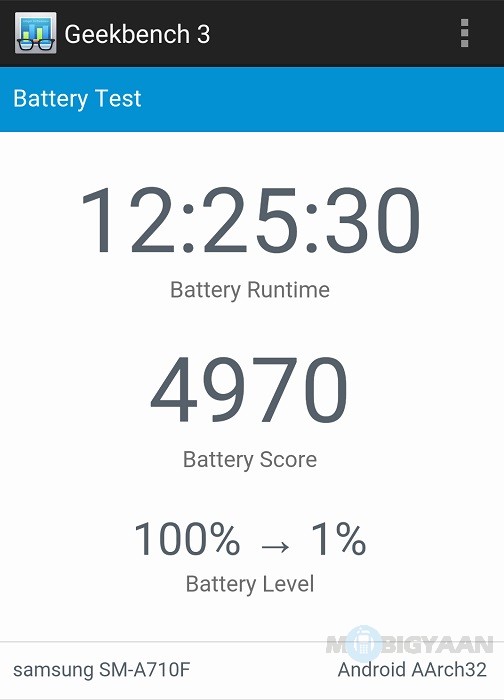
The A7 (2016) scored 4970 points in the Geekbench 3 battery test with a runtime of more than 12 hours which is really good. Here are the full stats of Geekbench 3 battery test of the Samsung Galaxy A7 (2016). Even on a mixed usage, the battery will easily last you for more than a day and a half. Below is the battery test table of the Galaxy A7 (2016) showing its battery performance.
[table id=11 responsive=flip /]
The phone comes with an Adaptive Fast Charger which charges the phone from 0 to 100 % in around 100 minutes on an average. However, the phone does get hot when the fast charger is connected so we advise you to avoid using it while it’s charging.
Pricing
The Samsung Galaxy A7 (2016) is available in three different colors:
- Black
- White
- Gold
The test unit we received is a Gold colored variant with an internal storage of 16 GB. There isn’t any other variant with more internal storage. The A7 (2016) was launched with a price tag of ₹33,400, but it’s listed on Samsung India’s website with a price tag of ₹32,500.
Verdict
So, time to end this Samsung Galaxy A7 (2016) review with our verdict. The phone sports a premium design with excellent build quality. The Super AMOLED screen on this phone is good and has good visibility under sunlight. The 3300 mAh battery is simply great. It will easily last you for more than a day and a half on normal usage.
Talking about the performance, it was satisfactory. For a phone of this price, we expect it to perform better. That extra 1 GB of RAM provided a slightly smooth overall experience as compared to the Galaxy A5 (2016). However, it did stutter and sometimes did not respond, just like the Galaxy A5 (2016).
The camera on this phone is similar to the one found on the Galaxy A5 (2016). Nothing has changed. While it did not give out bad images, they weren’t great either.
Other options:
- OnePlus X – ₹16,999
- YU Yutopia – ₹24,999
- OnePlus 2 64 GB – ₹22,999
- LeEco Le Max – ₹32,999
- Samsung Galaxy S6 32 GB – ₹33,990
If you are already spending more than ₹30,000, we suggest you to go for the Samsung Galaxy S6. But, if you are looking at more affordable options, the OnePlus X and the OnePlus 2 are better performers overall. The OnePlus X provides a much better and smoother performance than both the Samsung Galaxy A5 and A7 (2016).
Pros
- Premium design
- Sturdy build
- Good display
- Impressive battery
- Camera (should have been better though)
Cons
- Still runs on Lollipop
- No smooth performance
- No LED indicator
